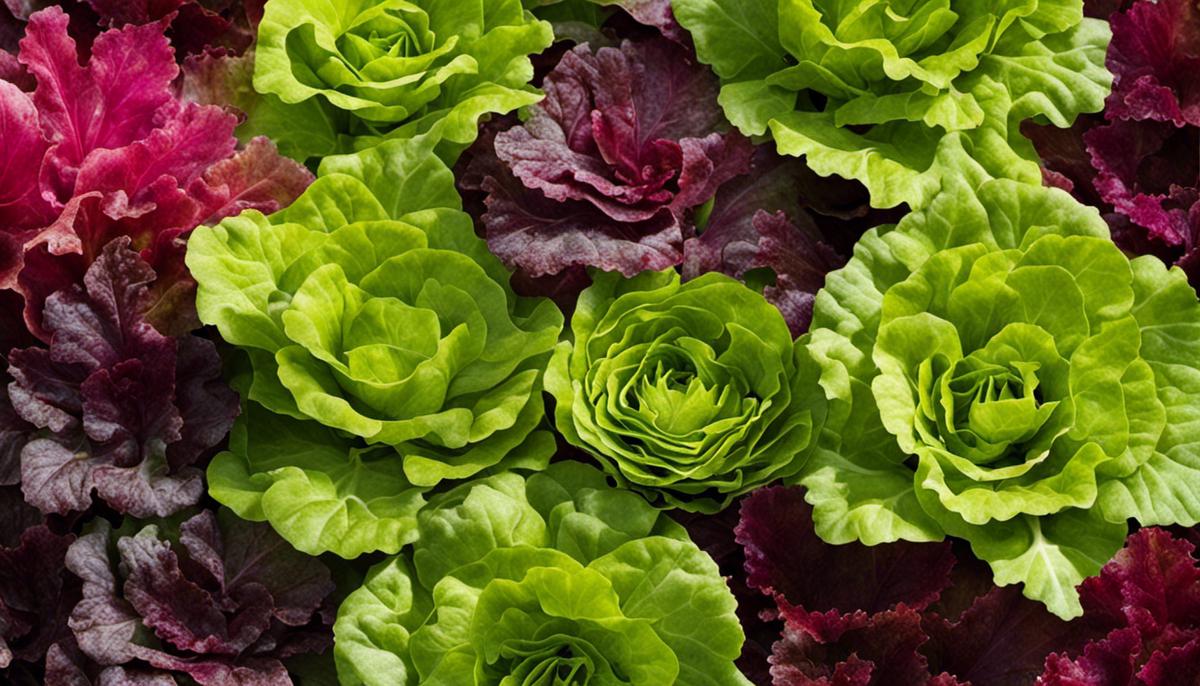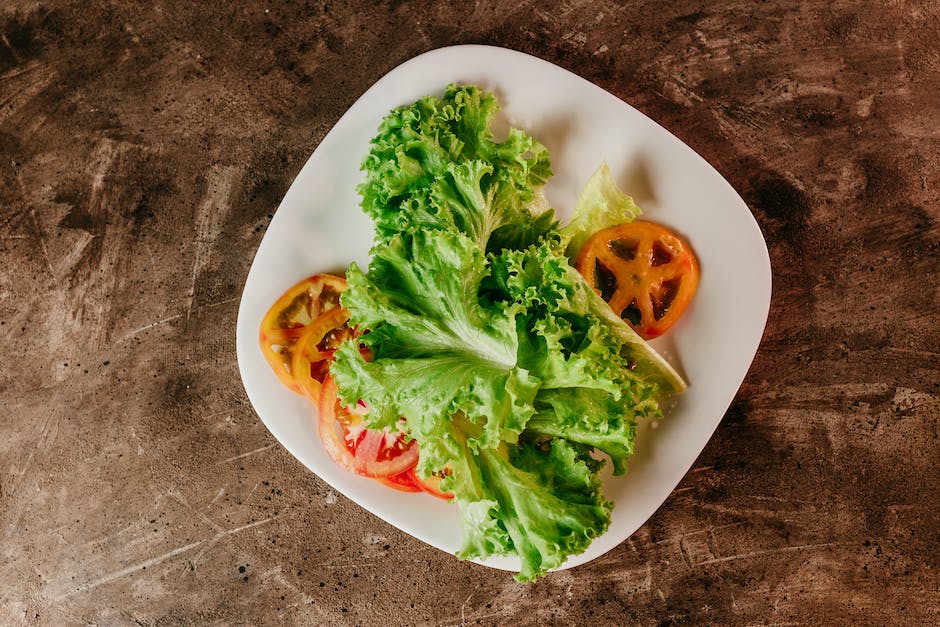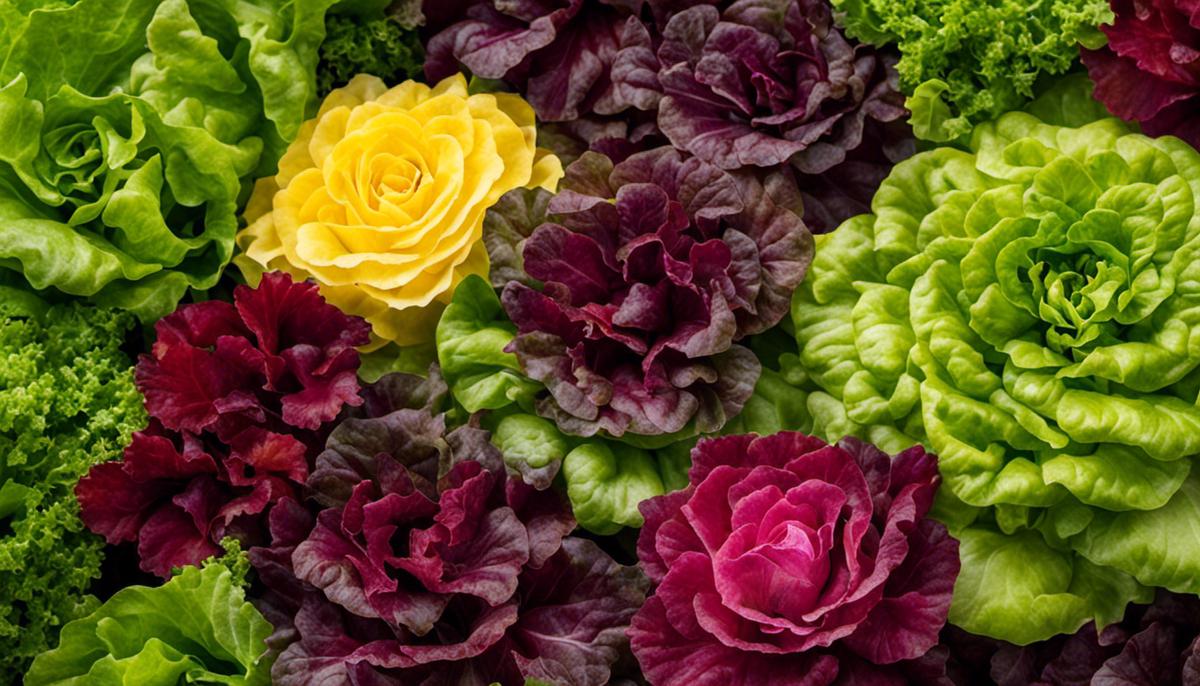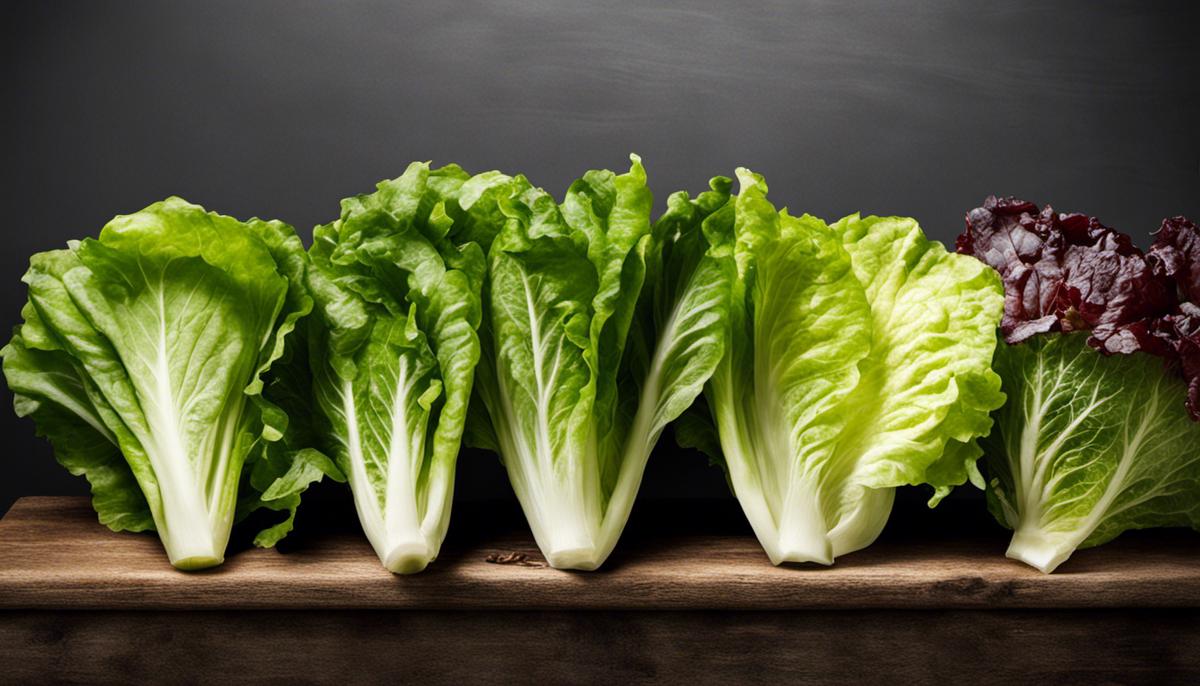Immerse yourself in the diverse world of lettuce – a common vegetable often relegated to a mere supporting role in dishes, but treasure troves of flavor, color, and nutrition in themselves. This exploration unravels a multitude of lettuce types, some ubiquitous like the crispy Iceberg and the robust Romaine, some lesser known like the intriguing Rouge d’Hiver. As you dive deep into each variety, you’ll discover subtleties in taste, crunch, usage, and nutritional values. Get ready to become a lettuce connoisseur, cherishing the leafy greens more than ever, and eager to experiment with them at your own kitchen frontier.
The Common Types of Lettuce
Lettuce is more than just the frilly leaf on your hamburger or the base of your basic salad. It’s a versatile and fundamental ingredient in various culinary creations across the globe. This unsung hero can range from crisp and mild in flavor, to soft with a nuanced, bitter edge, each type lending its unique touch to the gastronomic masterpiece it’s part of.
Reader Poll: What online courses would interest you?
Iceberg lettuce is possibly the most common and recognizable type. Its robust, crisp leaves are perfect for adding a fresh crunch to dishes and is often used in salads and sandwiches. Additionally, readers have probably seen the vibrant, robust leaves of romaine lettuce in a classic Caesar salad. Romaine’s thicker, hardy leaves hold up well under heavy dressings, and it imparts a slightly bitter taste that contributes to a nuanced flavor profile. Moving towards the more delicate end of the spectrum, there’s butterhead lettuce, also known as Boston or bibb lettuce. This type has soft, tender leaves with a subtle sweetness, and is often used as a base for light salads or an edible ‘cup’ for appetizer dishes.
When talking gourmet greens, arugula must be acknowledged. Though technically not a lettuce – arugula belongs to the brassica family, making it a relative of kale and broccoli – it is often used like one in culinary practices. With a potent peppery flavor and velvety leaves, arugula adds a sophisticated edge to salads, pastas, and even pizzas. Food does love to bend the rules, doesn’t it? This barely scratches the surface of the delectably diverse world of lettuce and greens. So, next time one reaches into that fridge, remember: with every type of lettuce lies a new and delicious culinary adventure.

Exploring Exotic Lettuce Varieties
Swapping the same old greens for something a bit more vibrant and unique can utterly transform a salad or sandwich. Take for example, Oak Leaf Lettuce, a lesser-known option that quite literally grows in the shape of an oak tree’s leaf. Its small, tightly clustered leaves are tender and sweet, with a subtle nuttiness that pairs exceptionally well with robust salad components like roasted vegetables or mature cheeses. Moreover, it’s remarkably eye-catching with colors ranging from deep green to burgundy, making it a visually appealing choice for any plate.
Subscribe to our newsletter!
Experiment with the crunch and zest of the often overlooked Batavia lettuce, sometimes referred to as French Crisp or Summer Crisp. This lettuce variety, originally from France, boasts hearty leaves that can withstand even the most robust salad dressings without wilting. Its loose-leaf head comes in colors of vibrant green to deep red, lending stunning hues to your salads. Its crisp texture and sweet, slightly bitter flavor marry well with citrusy vinaigrettes, grilled meats, and spiced nuts.
Lastly, there’s humble, curly endive. It’s a power-packed green that’s as delicious when mixed into salads as it is when wilted into pastas or atop bruschetta. Endive’s frilly leaves are slightly bitter, acting as a perfect foil to foods with rich, creamy flavors like blue cheese or anchovies. Its curling shape adds an elegant aesthetic to dishes, making even the simplest salads look like a gourmet masterpiece. Upgrade your next meal by exploring these lesser-known but immensely flavorful varieties of lettuce. You might just find your new favorite green.

Growing and Harvesting Lettuce at Home
Expanding your culinary landscape with homegrown lettuce is a crossroads where kitchen creativity meets garden gusto. The cycle of planting, nurturing, and harvesting your food brings an unparalleled sense of connection with what you eat. The process, while requiring some dedication, is not as daunting as one might assume.
The key secret to a successful lettuce garden is understanding the life cycle of this cool-weather crop. An ideal time to plant lettuce seeds is around 4 to 6 weeks before your area’s last frost date. However, if you reside in a climate where temperatures regularly surpass 80°F, installing a sunshade or growing lettuce in a shadier part of your garden will ensure the lettuce leaves don’t wilt or become bitter. Lettuce seeds require soil temperatures between 40°F to 85°F for germination, which usually happens within 7 to 10 days. The soil should be well-draining, but also capable of retaining moisture as lettuce has shallow roots and needs regular watering.
When it comes to harvest, you don’t need to wait until the lettuce head is completely grown. As soon as leaves form at the top, they can be harvested with a simple snip of the scissor or with a swift hand pluck. This cut-and-come-again method allows home gardeners to continually harvest fresh foliage without uprooting the entire plant. Just remember to leave an inch or two of leaves on the plant for regrowth and to stop harvest a few days before temperatures reach 80°F to prevent bitterness.
By coupling the gems of your garden with imaginative pairings in the kitchen, you edge closer to a dining experience that thrives on freshness, creativity, and above all, humility. The joy of nurturing a seed to the dinner table is a rewarding venture, waiting just outside the kitchen for those looking to add a touch of wholesomeness to their culinary oeuvre.

Innovative Recipes with Lettuce Varieties
Venturing beyond the well-tread path of Iceberg or Romaine, a whole host of delightful lettuce species await to tantalize your tastebuds. Take for instance the frisee lettuce, a curled and bitter green that is used to create texture and depth in salads and beyond. Often overlooked due to its mildly bitter flavor, this feathery green is the perfect balance to sweet fruit, soft cheeses, or a tangy citrus vinaigrette.
On the other end of the spectrum, there’s the often-underutilized and peculiarly named, Little Gem lettuce. It’s a small lettuce variety that gives way to a buttery flavor and crisp texture, comparable to baby Romaine, but with a unique sweetness. This lettuce is just as home on a plate under a drizzling of creamy buttermilk dressing as it is wedged between a gourmet burger bun or stuffed with a delectable filling as a healthy wrap.
And let’s not leave out the tantalizing charm of the Asian greens, especially Mizuna. Its spiky leaves hide a zesty punch and slight pepperiness that matches superbly with Asian-inspired dishes, like stir-fries or ramen noodle soups. It simply elevates the flavor profile of the eclectic fusion dishes that are gaining so much popularity.
Exploring the world of lettuce is a delightful culinary journey. It isn’t just about adding greens to a dish; it’s about creating a symphony of flavors and textures that will entertain your palate and inspire your cooking. So venture forth, and don’t be afraid to experiment with a newfound frond or two! You never know when you might discover a new favorite dish.

As we close this leafy adventure, you’re no more just a salad-mixer but a salad connoisseur, an enthusiast knowledgeable about a variety of lettuce types. You now know the understated exotic types hidden under the common ones and even the nitty-gritty of growing lettuce at home. Moreover, you’re equipped with an arsenal of delectable lettuce-based recipes right from your home kitchen to a gourmet rendezvous. So, as you venture out in your culinary pursuits, may the crisp crunch and the refreshing bite of lettuce elevate your foods and nourish your body, reminding you of the diverse world of this humble vegetable.

